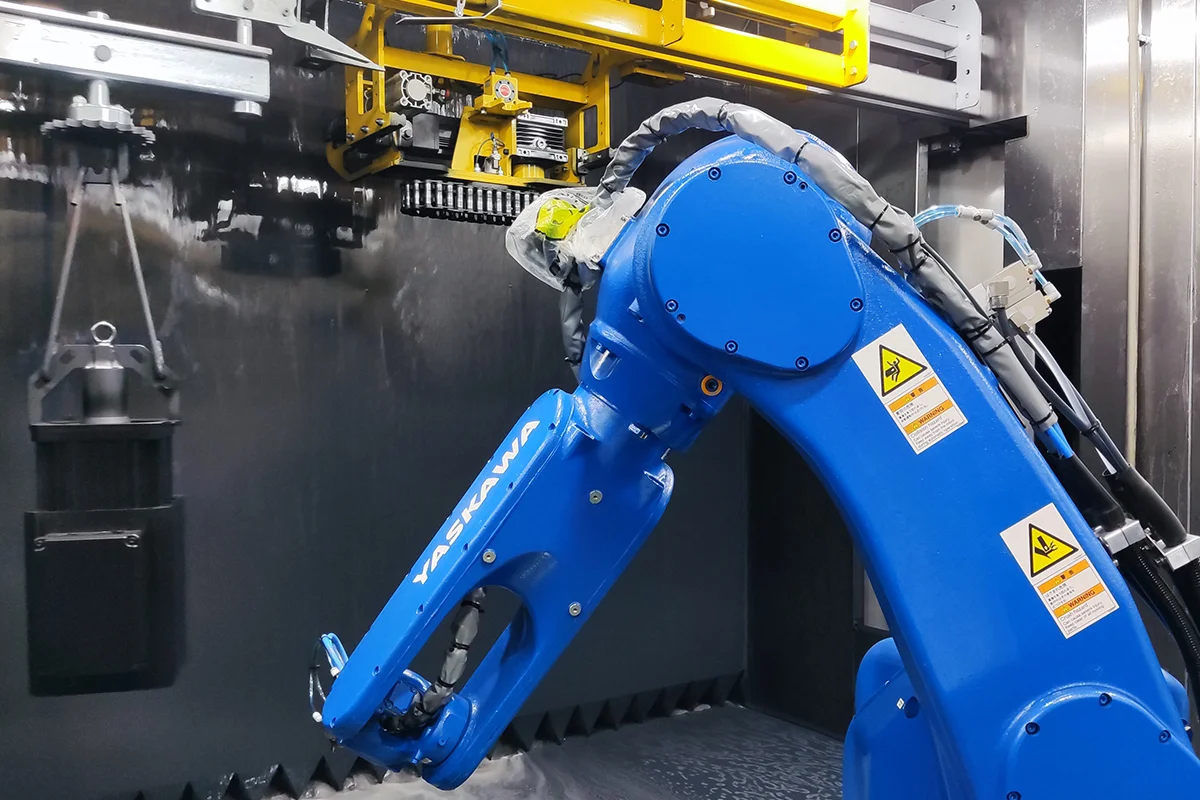- This topic is empty.
-
AuthorPosts
-
2025-08-18 at 9:32 am #7174
Introduction
Pipelines are a critical part of industrial infrastructure, responsible for transporting oil, gas, water, and various chemical substances across vast distances. Due to constant exposure to harsh environments, including moisture, temperature fluctuations, chemicals, and UV radiation, pipelines are prone to corrosion and wear. Protective coatings play a crucial role in extending their service life and ensuring operational safety. Among various coating methods, industrial spray painting equipment has emerged as a highly efficient and reliable solution for applying protective layers to pipelines. In this blog post, as a high quality automatic coating equipment exporter, Lexuan will share the application of industrial spray painting equipment in pipeline coating.
The Importance of Pipeline Coating
Pipeline coating is not merely an aesthetic enhancement; it is a functional necessity. The coating serves as a barrier, preventing direct contact between the pipeline’s metal surface and corrosive agents. Without proper coating:
-
Corrosion can rapidly degrade the metal structure.
-
Leakage risks increase, potentially leading to environmental hazards.
-
Maintenance costs escalate due to frequent repairs or replacements.
By applying a durable coating with industrial spray painting equipment, operators can significantly improve corrosion resistance, mechanical strength, and longevity.
Overview of Industrial Spray Painting Equipment
Industrial spray painting equipment is designed to deliver coating materials—such as epoxy, polyurethane, or fusion-bonded epoxy (FBE)—in a controlled and uniform manner. Common types include:
-
Airless Spray Systems – Use high-pressure pumps to atomize coating materials without compressed air, providing dense and even coverage.
-
Air-Assisted Spray Systems – Combine high-pressure pumping with compressed air for improved atomization and control.
-
Electrostatic Spray Systems – Utilize electrostatic charges to attract coating particles to the pipeline surface, reducing overspray and waste.
For pipeline coating applications, airless spray systems are most common due to their ability to handle high-viscosity materials and deliver thick, consistent layers in a single pass.
Application Process in Pipeline Coating
1. Surface Preparation
Before any coating application, proper surface preparation is essential. This step often includes:
-
Degreasing to remove oil and contaminants.
-
Abrasive blasting to eliminate rust, old coatings, and to create a rough surface profile for better adhesion.
-
Cleaning to ensure no dust or particles remain before spraying.
High-quality surface preparation can determine the success or failure of the coating, as inadequate preparation can cause premature coating failure.
2. Coating Material Selection
The choice of coating material depends on:
-
Pipeline contents (e.g., oil, gas, water, chemicals)
-
Environmental exposure (e.g., marine, desert, underground)
-
Operating temperature and pressure
Common coating types include:
-
Epoxy coatings for high corrosion resistance.
-
Polyurethane coatings for enhanced flexibility.
-
Fusion-Bonded Epoxy (FBE) for extreme adhesion and chemical resistance.
3. Spray Application
Using industrial spray painting equipment, operators apply the coating evenly along the pipeline surface. Key operational steps include:
-
Adjusting spray pressure and nozzle size to match coating viscosity.
-
Maintaining a consistent spray distance to ensure even coverage.
-
Overlapping passes to eliminate bare spots.
Special rotating spray heads or automated spray rigs are often used for coating long sections of pipe in production facilities.
4. Curing and Inspection
After application, coatings must be cured—either at ambient temperature or with heat—to achieve full hardness and chemical resistance. Once cured, inspections are conducted using tools such as:
-
Dry film thickness gauges to verify proper coating thickness.
-
Holiday detectors to identify pinholes or defects.

Advantages of Using Industrial Spray Painting Equipment for Pipeline Coating
High Coating Efficiency
Spray painting equipment can cover large pipeline surfaces quickly, reducing application time compared to manual brushing or rolling methods.
Consistent and Uniform Coverage
The atomization process ensures the coating is applied evenly, minimizing defects and ensuring full protection.
Ability to Handle High-Performance Coatings
Industrial spray systems can apply high-viscosity, high-solid coatings required for pipeline protection without the need for excessive thinning.
Reduced Material Waste
Modern spray equipment, especially electrostatic systems, reduces overspray and material loss, leading to cost savings and environmental benefits.
Technical Considerations for Optimal Results
Equipment Calibration
Improper pressure settings, nozzle sizes, or spray angles can lead to coating defects such as runs, sags, or thin spots. Regular calibration ensures consistent quality.
Operator Training
Skilled operators are crucial. Proper training ensures correct handling of spray guns, understanding of spray patterns, and adherence to safety protocols.
Environmental Conditions
Temperature, humidity, and wind can all influence coating performance. For instance, spraying in high humidity can cause moisture entrapment, leading to blistering.
Maintenance of Equipment
Regular cleaning and maintenance of spray painting equipment prevent blockages and ensure consistent atomization.
Industry Standards and Compliance
Pipeline coating must comply with standards such as:
-
ISO 21809 for pipeline coating materials and application.
-
NACE SP0169 for corrosion control of buried or submerged pipelines.
-
SSPC and ASTM standards for surface preparation and coating thickness measurement.
Adhering to these standards ensures coatings meet performance expectations and regulatory requirements.
Conclusion
The application of industrial spray painting equipment in pipeline coating is a cornerstone of modern corrosion protection strategies. By enabling fast, uniform, and durable coatings, spray technology significantly extends pipeline service life, reduces maintenance costs, and enhances operational safety.
As industries continue to demand higher performance and sustainability, advancements in spray equipment—combined with automated systems—will play an even more critical role in ensuring pipelines remain protected in the most challenging environments. Through proper surface preparation, material selection, and adherence to standards, industrial spray painting remains one of the most effective solutions for pipeline coating today.
http://www.lexuaneqpt.com
Lexuan -
-
AuthorPosts
- You must be logged in to reply to this topic.
